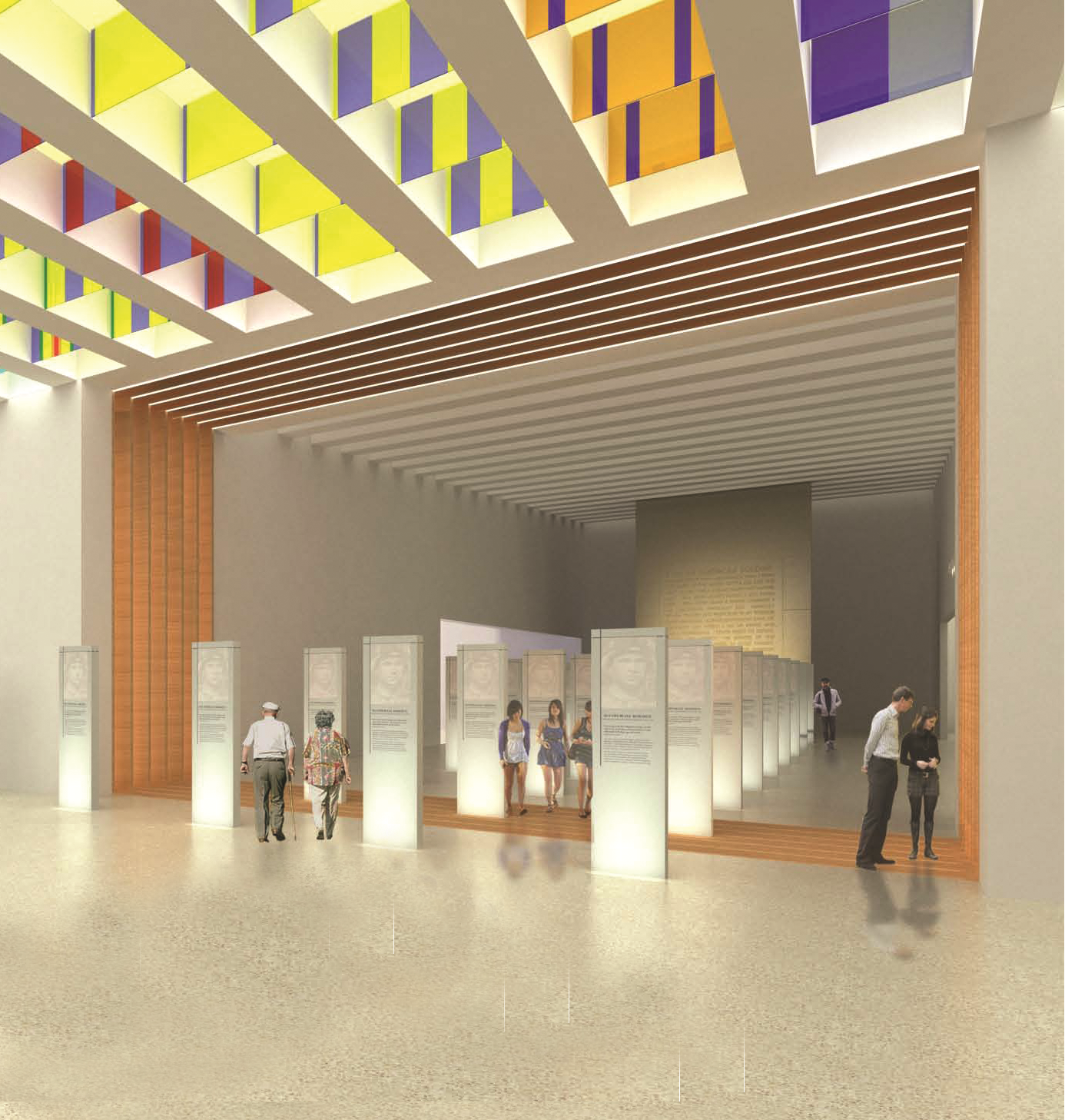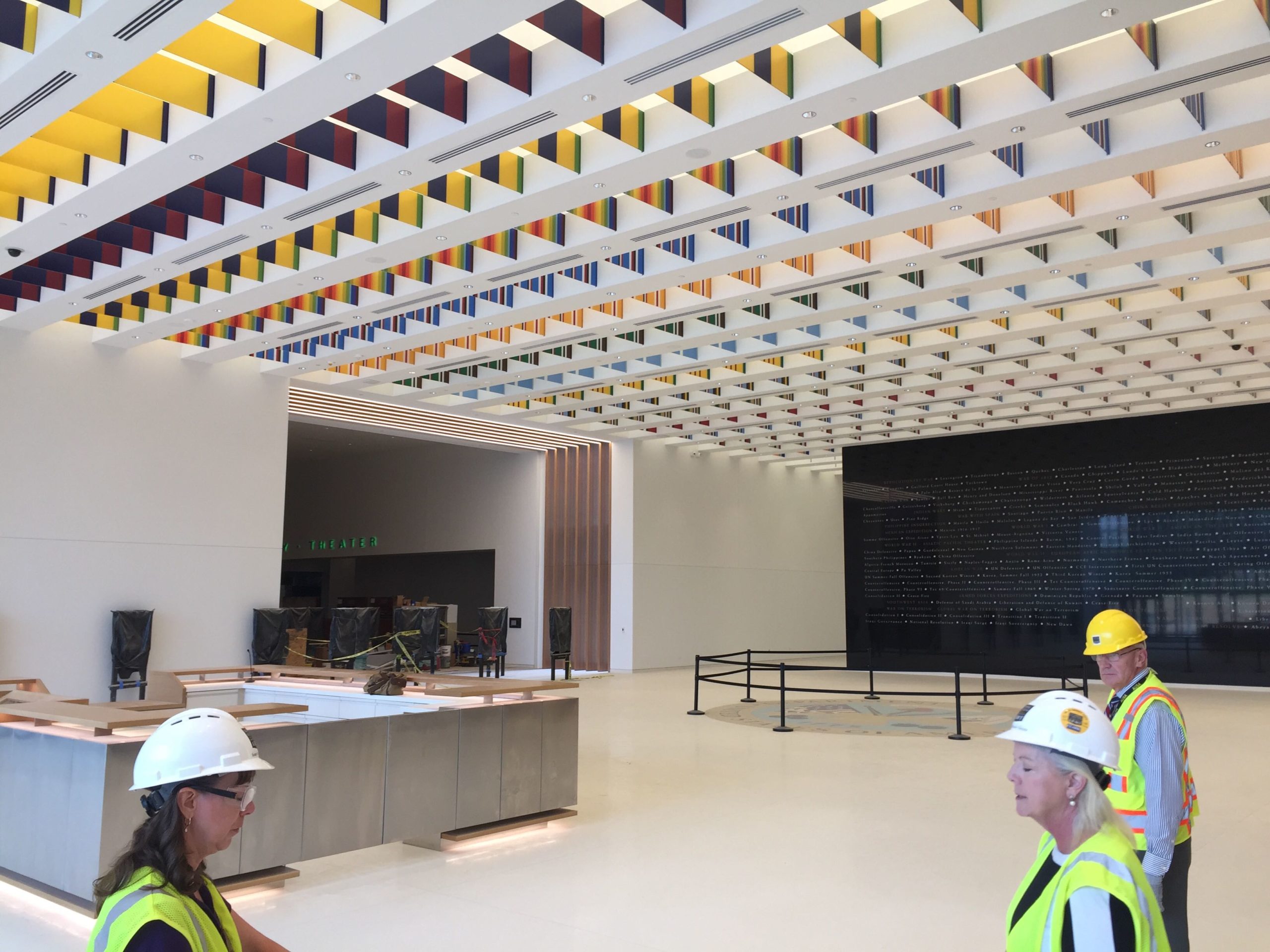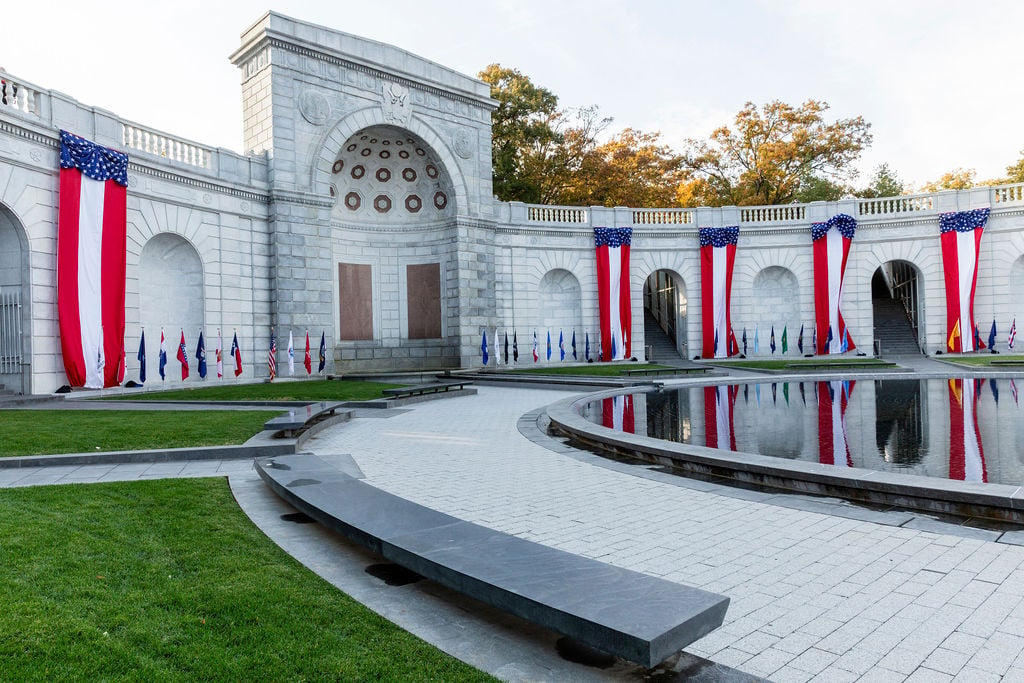Army families, veterans, school groups, and armchair historians: rejoice! Next year, the National Museum of the US Army, the first museum to tell the story of the military branch in its entirety, is slated to open.
The museum has been in the making since 1814, when the 13th Congress asked the Army to create a space for the preservation of its history. One small problem, though—they didn’t appropriate any money to build it.
Now, 205 years and $200 million of public and private funds later, the museum approaches completion. The result? A five-story, 185,000-square-foot, stainless-steel-clad structure that shimmers like a mirage. It’s located in a forest clearing about 20 miles south of DC at Fort Belvoir. Within its walls, gallery spaces will hold more than 1,500 artifacts. Once open in 2020, visitors will be able to come to the museum 364 days a year, for free. (It’ll be closed on Christmas.)

Memorializing the Army’s history and its contributions to society, and celebrating its legacy are all main objectives. But the museum also aims to contrast the personal experiences of individual soldiers with the often monolithic image of the military. Architecture firm Skidmore Owings & Merrill designed the building itself to symbolize the contrast: rigid as the steel exterior may appear, its mirror-like finish absorbs then reflects the warmth of its surroundings, explains architect Eliezer Lee.
“A lot of people think of [stainless steel] as a kind of cold, harsh material by itself, much like the Army,” says Lee. “When you’re able to kind of tell the complete story, the complete picture, the material seemed appropriate.”
The museum begins telling that story outside, with a row of pylon placards leading into the 7,500-square-foot lobby. Each placard displays a baseball card-style write-up of a soldier’s name, their years of service, deployments, and a quote.
Inside, rows of campaign streamers hang from the lobby’s ceiling, while the Army motto, “This we’ll defend,” is emblazoned in terrazzo on the floor. On the wall opposite the entrance, a black stone wall lists the Army’s 190 engagements.

More soldier placards—in formation like a miniature terra-cotta army—guide visitors into the main concourse. For those seeking a more expansive list of service-member experiences, there’s the Registry of the American Soldier, a completely crowdsourced database of soldiers that anyone can contribute to. The registry will be accessible at kiosks in the museum, and it’s also available online.

A six-part historical exhibit runs along the main concourse. It spans the American Revolution to current entanglements in the Middle East. Museum director Tammy Call says each section will host an array of interactive elements. “[It won’t just be visitors] walking through a gallery and reading text panels,” she says.
Other highlights include a panoramic theater space that will seat 200, and a real World War II-era Sikorsky medical rescue helicopter suspended from the ceiling. For field trip groups, there’s an arcade of cooperative games that mimic real-life army challenges, such as coordinating a supply drop or piloting a drone—for a humanitarian mission, though we can see how that particular feature could invite controversy.
On the third floor, the museum will display artifacts from Japanese-American soldiers who fought for their country during World War II, even though their own government had questioned their patriotism and imprisoned their families in internment camps. “These artifacts are on display for the first time and telling a really important, but sensitive, story,” says museum spokeswoman Susan Smullen.
Outside, in the Medal of Honor Garden, a black granite wall is engraved with the name of every Army Medal of Honor recipient. The museum will add to the wall over time.



















